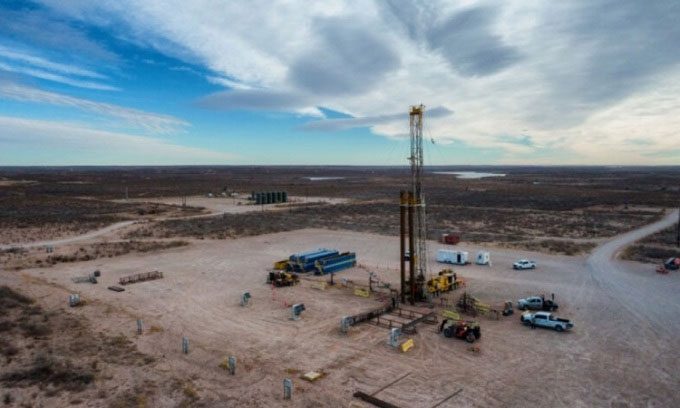Geologists Estimate 46 Million Tons of White Hydrogen Below Lorraine Could Help Europe Move Away from Fossil Fuels.
When geologists decided to explore beneath the old coal mining region in southeastern France, they hoped to find fossil fuels close to the surface. Therefore, they were astonished to discover a white hydrogen deposit that may be one of the largest in the world. If the research team’s estimates are accurate, the area contains up to 46 million tons of white hydrogen, which could provide carbon-free fuel to help the European Union cease its reliance on fossil fuels, IFL Science reported on September 25. However, extracting this resource will not be an easy task.

Drilling equipment used for gas exploration. (Photo: Ars Technica).
The new hydrogen deposit is located in the Lorraine region of France, which was once famous for coal mining. While searching for methane gas in the coal-rich basin, a research team from the University of Lorraine and the French National Centre for Scientific Research (CNRS) examined the near-surface layer and discovered unexpectedly high levels of hydrogen. The deeper they drilled, the higher the hydrogen concentration became. The hydrogen concentration was 15% at a depth of 1,093 meters and increased to 20% at a depth of 1,250 meters. Researchers estimate that the concentration could reach 98% at 3,000 meters, although they have not yet reached this depth.
“Our data indicates that the ground beneath the mining basin in Lorraine is very rich in white hydrogen. If confirmed, this discovery could represent a significant step toward transitioning to an environmentally friendly clean energy source,” said Philippe de Donato, research director at CNRS and the University of Lorraine.
Hydrogen is the most abundant element in the universe, although it rarely exists in its pure form and is often combined with other elements, such as oxygen, to form water. Essentially, white hydrogen is natural hydrogen in its gaseous form (H2), as opposed to gray or black hydrogen produced through industrial processes. White hydrogen is particularly attractive because it requires no processing and does not produce greenhouse gases when burned, thus providing a potential source of clean energy.
“It is called ‘white’ because it does not produce greenhouse gases. Unlike gray and black hydrogen produced through the processing of natural gas and coal, which generate significant amounts of greenhouse gases, white hydrogen is readily available,” explained Jacques Pironon, research director at the GeoRessources laboratory at the University of Lorraine. “This type of gas is even more ecologically friendly than green hydrogen, which is produced by electrolysis of water using electricity from renewable sources like solar or wind. In fact, these two energy sources are not CO2-neutral, releasing emissions during production and transportation.”
However, there are many obstacles to overcome in order to extract white hydrogen. First, researchers need to demonstrate that the hydrogen concentration continues to increase at a depth of 1,200 meters, which is the furthest depth that current drilling equipment can reach. Additionally, there are many questions about how to extract this fuel and find a viable market for it. The company Française de l’Énergie in France has applied for licenses to explore and exploit in an area of 2,254 km2 in Lorraine.


















































